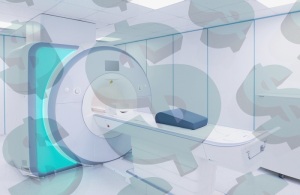by
Thomas Dworetzky, Contributing Reporter | May 11, 2018
Price, rather than usage, is the main culprit behind higher U.S. healthcare costs.
“We find that higher prices – more so than utilization – explain the United States’ high health spending relative to other high-income countries,” according to findings from the Kaiser Family Foundation, presented at a meeting at the Peterson Center on Healthcare in Washington, D.C.
Of note, the U.S. tops other industrialized countries when it comes to availability, use, and costs of MR, as well.



Ad Statistics
Times Displayed: 45604
Times Visited: 1365 MIT labs, experts in Multi-Vendor component level repair of: MRI Coils, RF amplifiers, Gradient Amplifiers Contrast Media Injectors. System repairs, sub-assembly repairs, component level repairs, refurbish/calibrate. info@mitlabsusa.com/+1 (305) 470-8013
The U.S. averages for MR units were 39 per 1 million people, versus 22 in comparable countries. Top spot went to Japan at 52 units per 1 million people.
Use is also higher in the U.S. at 118 MR exams annually per 1,000 people versus 83 per 1,000 in similar countries.
Using data from 2014, Kaiser found that the average price of these MR exams was higher in the U.S. than other wealthy countries, with an average price of $1,119 per MR.
This topped the U.K. by 42 percent, was 122 percent more than in Switzerland and 420 percent higher than in Australia.
The national 95th percentile average price of an MR in the U.S. is $3,031, according to the International Federation of Health Plans, as reported by authors Rabah Kamal and Cynthia Cox.
"Nearly a fifth of the [U.S.] economy goes to healthcare spending – a far larger share than in any other large, wealthy country in the world," the foundation said in a statement.
In 2016, noted the study, the U.S. spent 18 percent of its GDP on healthcare, versus next highest Switzerland at 12 percent. The average amount spent on healthcare per person in comparable countries – $5,198 – is half the spend in the U.S. – $10,348.
The U.S. is also more expensive when it comes to most prescription drugs and healthcare services.
Use of a number of these services, such as doctor consults and hospital stays is actually lower in the U.S. than other economically similar countries.
But use of some services, such as C-sections and knee replacements, is higher in the U.S. than in similar countries – and both are more expensive.
In addition, the U.S. averages many fewer angioplasties versus bypass surgeries. Costs for both are far higher in the U.S. The average angioplasty in the U.S. is 183 percent costlier than Australia, and 129 percent pricier than in Switzerland.
The wide variance in scan costs in the U.S. was highlighted in February by Clear Health Costs, a website that lists the costs of medical procedures by zip code.
“Consumers aren't always aware of the vast differences,” Bruce Carlson, publisher at Kalorama Information,
told HCB News at the time. “There is a move toward transparency and I'd expect [that to] increase in the future.”

